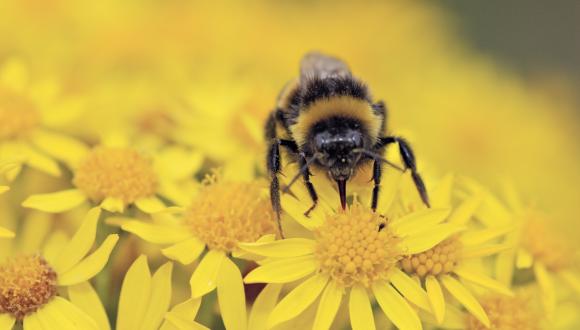Falkirk biodiversity projects share £317k Nature fund cash
20 August 2019
Two nature projects will share £317,000 to create high quality urban green spaces for both people and wildlife in Falkirk. The projects have been confirmed among the recipients of NatureScot’s (NatureScot’s) Biodiversity Challenge Fund.
The Froglife Trust’s £160k will help to restore and create homes for pond-loving wildlife at 12 sites across the town; and Buglife’s Central Scotland B-Lines project will use its £157k to create a coast-to-coast network of special places for nature, with Falkirk at its heart. Both projects include valuable training opportunities for local conservation volunteers.
Amphibians and reptiles are the main focus of Come Forth for Wildlife – the Froglife Trust’s project – but a wide range of other animals will also benefit from the work, including bats, small mammals, birds and aquatic insects. The project involves creating 14 new ponds to boost aquatic biodiversity; and 22 new scrapes – shallow depressions which seasonally hold water containing invertebrates, important food for foraging wader birds and their chicks.
Amphibians will also benefit from improved species-rich grasslands near the ponds, and wildlife corridors will be enhanced in four neighbourhoods in Falkirk. Training in species identification, survey and habitat management will be provided for 96 local volunteers.
Central Scotland B-Lines will create 100 hectares of wildflower habitat across 50 urban sites, connecting East Dunbartonshire, South Lanarkshire, Falkirk and Edinburgh, helping pollinators to move freely through towns and cities. Local community groups will take on ownership of each site. The project includes training in areas such as managing and monitoring of local sites, and how to increase habitat connectivity across the Central Belt.
Suzanne Burgess, Buglife’s Scotland Manager, said: “We’re delighted that our ground-breaking, landscape-scale project has received this funding from NatureScot. We’re now really looking forward to working with our partners, fantastic volunteers and local communities in Falkirk and the other project areas to try and halt the decline in Scotland’s vital pollinating insects.”
Along with climate change, nature – and biodiversity loss – is also a global and generational threat to human well-being. However, enhancing our nature is also recognised as being part of the solution to the climate emergency.
These projects are two of 14 successful applicants across Scotland to share the £1.8 million Biodiversity Challenge Fund over a two-year period The funding will support large-scale projects that aim to deliver rapid change on the ground to help our most at-risk habitats and species, including mammals and birds, connect existing nature reserves and tackle non-native invasive species.
Minister for Rural Affairs and the Natural Environment, Mairi Gougeon, announced the awards on a visit to one of the successful projects in Edinburgh. She said: “I am delighted that, through the Biodiversity Challenge Fund, the Scottish Government and NatureScot can support these fantastic projects across the country to safeguard some of our most vulnerable species and habitats, and protect them from invasive species. Their success will play a crucial role in our efforts to improve nature and help Scotland meet its international biodiversity commitments.”
NatureScot Chief Executive, Francesca Osowska, said: “Climate change is one of the key drivers of nature loss – but it’s not too late to act. In fact, improving nature is also one of the solutions to the climate emergency.
“There are five areas we need to focus on to improve biodiversity – restoring our habitats, changing our use of the land and sea, reducing pollution and climate change and tackling invasive non-native species. These projects will improve nature across Scotland for all our benefit.
“We know we have a big task before us but we have been working for years with our partners to meet international nature targets. We are ready to deliver the transformational change needed to bring a nature rich future for Scotland.”




